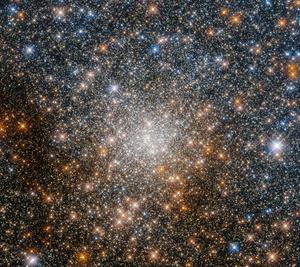Glossary term: Amas d'étoiles
Description: Les amas d'étoiles sont des groupes d'étoiles situées à une distance similaire de nous, et dont la composition chimique et le mouvement sont similaires. Les étoiles de l'amas sont susceptibles d'avoir été formées à partir du même nuage de gaz et de poussières. La distribution de la densité peut être concentrée au centre et sphérique, ou prendre des formes plus complexes. Les amas d'étoiles sont classés en deux catégories : les amas ouverts et les amas globulaires. Les amas ouverts sont plus jeunes (de quelques millions d'années à environ 4-5 milliards d'années), comptent des centaines ou des milliers d'étoiles et peuvent être associés à des restes de gaz et de poussière provenant du nuage parent. Les amas globulaires comptent parmi les entités les plus anciennes, la plupart d'entre eux ayant plus de 10 milliards d'années. Il s'agit d'amas concentrés au centre, de forme sphérique, contenant des milliers à des millions d'étoiles.
Related Terms:
- Disque galactique
- Halo galactique
- Amas globulaire
- Voie lactée
- Étoile
- Formation des étoiles
- Cluster ouvert
See this term in other languages
Term and definition status: The original definition of this term in English have been approved by a research astronomer and a teacher The translation of this term and its definition is still awaiting approval
The OAE Multilingual Glossary is a project of the IAU Office of Astronomy for Education (OAE) in collaboration with the IAU Office of Astronomy Outreach (OAO). The terms and definitions were chosen, written and reviewed by a collective effort from the OAE, the OAE Centers and Nodes, the OAE National Astronomy Education Coordinators (NAECs) and other volunteers. You can find a full list of credits here. All glossary terms and their definitions are released under a Creative Commons CC BY-4.0 license and should be credited to "IAU OAE".
If you notice a factual or translation error in this glossary term or definition then please get in touch.
Related Media
Stars in globular clusters near the heart of the Milky Way
Credit: ESA/Hubble & NASA, R. Cohen credit link
License: PD Public Domain icons









